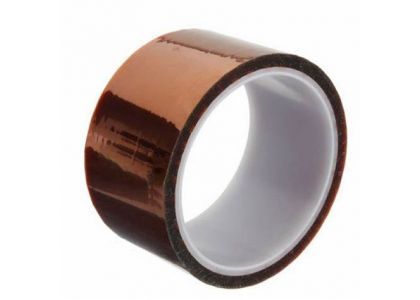
Overview of Aerospace Environmental Extremes
Materials employed in aerospace contexts face a suite of unique challenges: near-perfect vacuum (10⁻⁷ Pa), atomic oxygen erosion in low Earth orbit, micrometeoroid impacts, ionizing radiation, and thermal swings from –180 °C in Earth’s shadow to +120 °C in direct sunlight. Each of these factors can degrade polymer tapes through embrittlement, adhesive creep, or contamination. PI tapes china manufacturer partners utilize advanced polymer chemistry and strict cleanroom assembly to deliver Kapton tapes that reliably perform from pre-flight integration through mission duration.
Outgassing and Vacuum Stability Standards
Kapton tapes must comply with ASTM E595 and NASA SP-R-0022 standards, limiting Total Mass Loss (TML) to <1.0% and Collected Volatile Condensable Materials (CVCM) to <0.1%. Top high performance polyimide film suppliers implement multi-stage vacuum bake-out and dynamic outgassing tests, achieving TML <0.5% and CVCM <0.05%. These rigorous protocols prevent polymer vapors condensing on critical surfaces like lenses, solar arrays, and sensor windows, ensuring optical and electrical subsystems remain uncontaminated during long-term missions.
Radiation Resistance and UV Aging Tests
Kapton’s aromatic backbone confers resistance to total ionizing dose (TID) up to 1 Mrad and displacement damage from protons and electrons. Certified trusted supplier kapton tapes batches undergo gamma irradiation, simulating cumulative dose exposure of multi-year missions, with <20% adhesive peel degradation. Complementary UV chamber tests replicate high-energy UV flux, revealing no micro-cracking or discoloration after simulating 24 months in low Earth orbit, critical for exterior thermal blankets and sun-shield applications.
Thermal Cycling: From Launch to Orbit
Thermal vacuum chambers replicate orbital temperature cycles: rapid transitions from –180 °C to +120 °C stress both film and adhesive. Premium quality PI tape endures over 1,000 cycles without delamination, maintaining >85% shear strength and <5% dimensional change. Material characterization post-test shows no microcracks or plasticizer migration, crucial for wire harness stability and thermal control surface adhesion.
Atomic Oxygen and Micrometeoroid Exposure
In low Earth orbit, atomic oxygen can erode unprotected polymers at ~90 km altitude. Kapton films coated through proprietary processes resist this erosion, with mass loss rates under 10⁻⁶ mg/cm²/hr—verified in ground-based AO facilities. Furthermore, micrometeoroid and orbital debris (MMOD) tests involve hypervelocity particle impacts; PI tapes china manufacturer formulations retain mechanical integrity after simulated 7 km/s impacts, safeguarding underlying substrates.
Flight Hardware Integration Techniques
Achieving bubble-free, contaminant-free adhesion in spacecraft builds requires cleanroom (ISO Class 5) environments, ESD-safe tools, and precise humidity control. PI tapes china manufacturer collaborates with integrators to design heated roller applicators and vacuum-assist laydown machines, ensuring uniform bond lines even on curved composite panels. Adhesive activation via controlled substrate warming (50–60 °C) optimizes wet-out without off-gassing.
Case Study: CubeSat Harnessing Solutions
A 6U CubeSat program adopted premium quality PI tape for internal harness routing and thermal isolators. Qualification tests included random vibration (Grms 12), thermal vacuum cycling (–180 to +120 °C, 100 cycles), and radiation exposure (300 kRad). Post-launch operations over 12 months in LEO recorded stable telemetry with zero harness failures. The mission’s success underscored the tape’s resilience across mechanical, thermal, and radiation stresses.
Engineer Insights: Qualification Testing
“Our partnership with trusted supplier kapton tapes has streamlined our materials qualification,” says a senior flight engineer at Orbital Systems Inc. “We now see less than 3% peel loss after 500 kRad gamma exposure and consistent performance after 1,500 thermal cycles—results that exceed most mission requirements and minimize retest cycles.”
Compliance and Regulatory Frameworks
Beyond ASTM E595, Kapton tapes for aerospace must adhere to ECSS-Q-ST-70-02C (European Cooperation for Space Standardization) and NASA NPR 8715.4A (Payload Safety). These frameworks cover material flammability, toxicity, and outgassing. PI tapes china manufacturer routinely submits materials to independent labs for ECSS and NASA audits, ensuring full compliance before flight integration.
Comparative Compliance Benchmarks
|
Standard |
Requirement |
Achieved by Kapton Tape |
|
ASTM E595 TML |
<1.0% |
0.45% |
|
ASTM E595 CVCM |
<0.1% |
0.04% |
|
NASA Radiation (1 Mrad) |
<30% adhesion loss |
18% adhesion loss |
|
ECSS-Q-ST-70-02C |
Flammability |
Non-flammable |
|
Atomic Oxygen Erosion Rate |
<1x10⁻⁵ mg/cm²/hr |
8x10⁻⁶ mg/cm²/hr |
|
MMOD Impact Resistance |
7 km/s |
Maintained integrity |
Summary of Key Selection Criteria
When specifying Kapton tape for aerospace, evaluate:
Ultra-low outgassing (TML & CVCM) measured to ASTM E595
Verified radiation tolerance (TID & displacement damage)
Resistance to atomic oxygen and MMOD
Thermal vacuum cycle endurance
Compliance with ECSS and NASA safety standards
Cleanroom-compatible application processes
Final Thoughts on Future Deep-Space Missions
As humanity sets sights on lunar habitats and Mars expeditions, material reliability becomes ever more critical. Partnering with a leading PI tapes china manufacturer ensures your tape solutions are grounded in rigorous testing and proven in orbit—laying the foundation for safe, long-duration exploration beyond low Earth orbit.